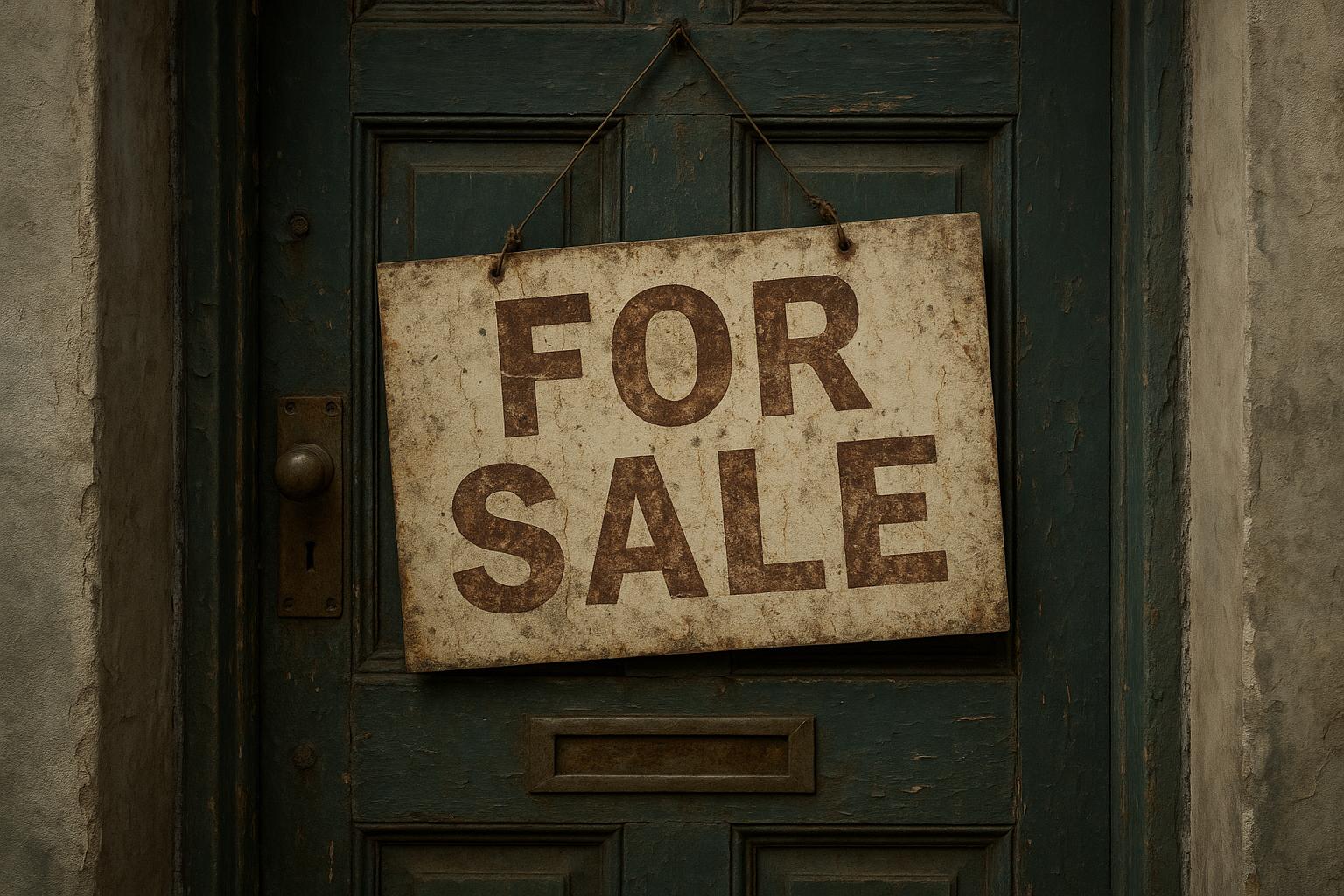Home sellers in the UK are facing increasing challenges as properties priced too high tend to linger on the market for significantly longer periods, according to recent findings from Zoopla. The property portal has revealed that homes requiring a price reduction take two and a half times longer to sell than those priced accurately from the start. This trend is particularly pronounced in certain parts of the country, where over a quarter of homes listed have remained unsold for over six months.
Zoopla’s latest data shows that in the past month alone, 10 per cent of homes on the market had their asking prices cut – a figure notably above the five-year average of 6 per cent. This continuing rise in price reductions reflects a market still favouring buyers, where sellers are urged to understand the local market conditions and be realistic about pricing. Richard Donnell, Zoopla’s executive director, emphasises that while demand for homes remains robust with many people looking to move, buyers now benefit from a broader selection of properties, especially in southern England. He warns that "the risk of being too ambitious on price is your home taking more than twice as long to find a buyer – or not selling at all."
Adding complexity to the market, recent speculation surrounding potential tax changes is contributing to buyer hesitation. Rumoured reforms ahead of the upcoming Autumn Budget include a lifetime cap on gifts, which could impact the financial support parents provide to first-time buyers, and proposals to replace stamp duty and council tax with a new annual tax on homes valued over £500,000. It has also been suggested that homes worth more than £1.5 million might become subject to capital gains tax upon sale. According to Tom Bill, head of UK residential research at Knight Frank, "A price-sensitive housing market has become a whole lot more price-sensitive over the last fortnight thanks to the speculation around property taxes." He predicts price growth for the year will hover just above zero and anticipates that the period leading up to the November Budget will suppress transactional activity and, consequently, stamp duty revenue.
House price growth remains modest, with the average property value rising by 1.3 per cent over the past year to around £270,600. This represents a slowdown compared to earlier in 2025, when prices grew by 2.1 per cent, though it is still above last year’s 0.6 per cent. Zoopla attributes the subdued growth mainly to an increased supply of homes, which is estimated to be 10 per cent higher than the previous year. Market insiders back this view. Jeremy Leaf, a north London estate agent and ex-chairman of the Royal Institution of Chartered Surveyors (RICS), notes that the summer months typically slow activity as decision-makers are away and listings accumulate. Similarly, Amy Reynolds of Richmond estate agency Antony Roberts highlights challenges in pricing due to ongoing political speculation and the significant stamp duty costs buyers face.
Mortgage affordability also continues to influence buyer behaviour, particularly in southern England. Although mortgage rates near 4 per cent are now available, the average buyer faces rates that remain well above the pre-2022 era’s low of 1 to 2 per cent. Tomer Aboody, director of specialist lender MT Finance, suggests that many buyers may be waiting for further rate cuts that are unlikely soon, as the recent rate cut may be final for the year. He warned that with limited government support and potential new taxes, the housing market could see a slowdown in transaction volumes.
Regional disparities in market conditions are stark. Northern regions benefit from fewer homes on the market, leading to quicker sales times. For example, in July 2025, the average time to sell a home in the North West and North East was just 27 days, which is 23 per cent faster than the national average of 35 days. These areas have also seen house price increases above the national average, at 2.7 per cent and 2.1 per cent respectively. Conversely, southern England is experiencing a stronger buyer’s market due to a glut of available homes. In areas like London, the South East, and the South West, sales times average around 39 to 40 days, roughly 11 per cent longer than the national average, with price growth close to flat at around 0.3 to 0.5 per cent.
Certain coastal and popular second-home destinations in the south are especially saturated, with more than 25 per cent of properties on the market exceeding six months of listing. This oversupply contributes to price drops in locations such as Truro, Exeter, and Bournemouth, where prices have fallen by around 1 to 1.4 per cent year-on-year. Other markets requiring particularly realistic pricing include York, Torquay, and Llandrindod Wells in Wales. However, some places continue to experience limited supply, including Dundee, Wolverhampton, parts of outer London, and Northampton.
In summary, the UK housing market in 2025 remains shaped by cautious buyers and an abundance of supply, especially in southern England. Sellers are increasingly advised to price properties realistically to avoid extended stays on the market and the risk of price cuts that further delay sales. Meanwhile, ongoing uncertainty regarding potential tax reforms and mortgage affordability is expected to keep the market relatively subdued for the foreseeable future.
📌 Reference Map:
- Paragraph 1 – [1], [2], [3], [4], [5], [6], [7]
- Paragraph 2 – [1]
- Paragraph 3 – [1]
- Paragraph 4 – [1], [2], [3]
- Paragraph 5 – [1]
- Paragraph 6 – [1]
- Paragraph 7 – [1]
- Paragraph 8 – [1]
Source: Noah Wire Services
